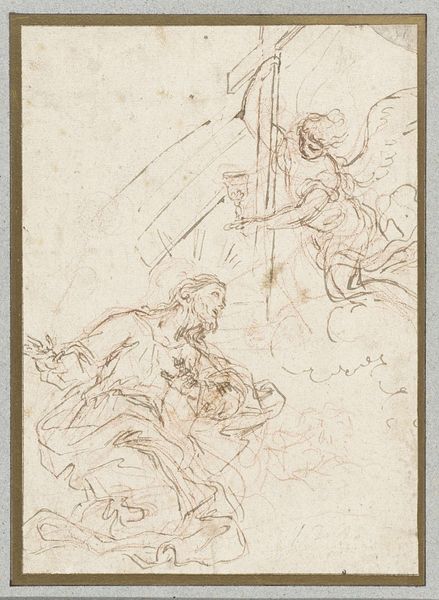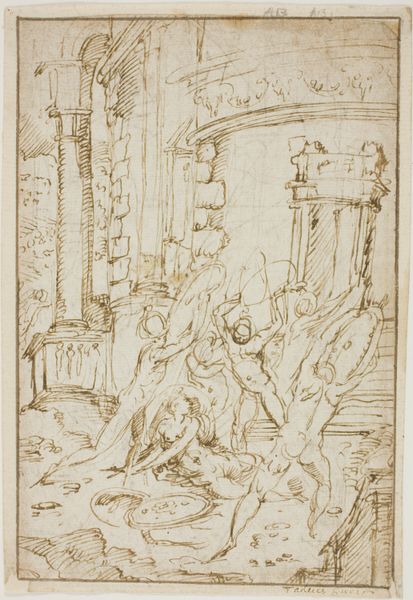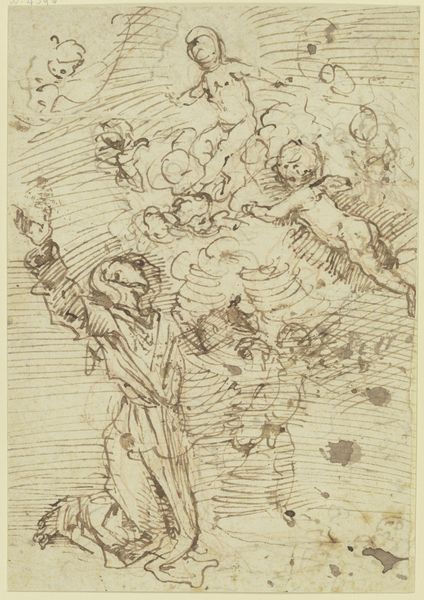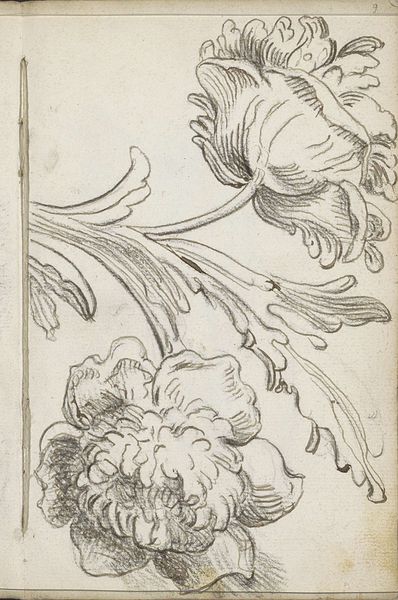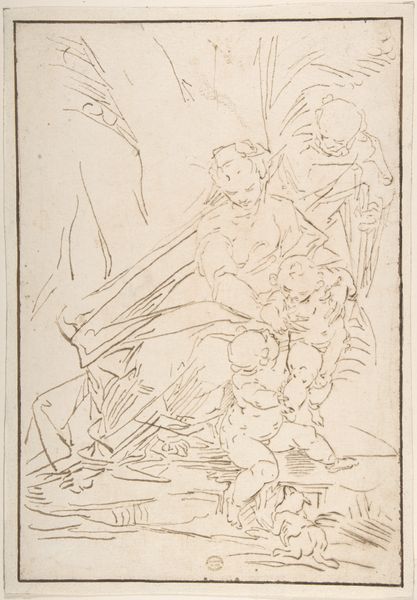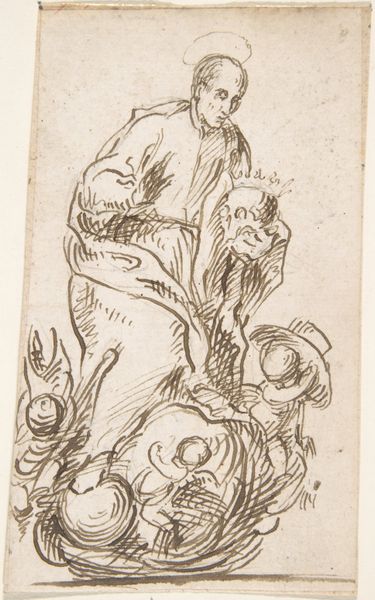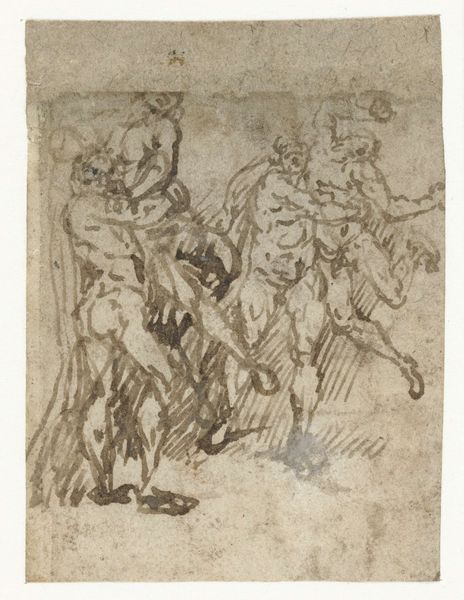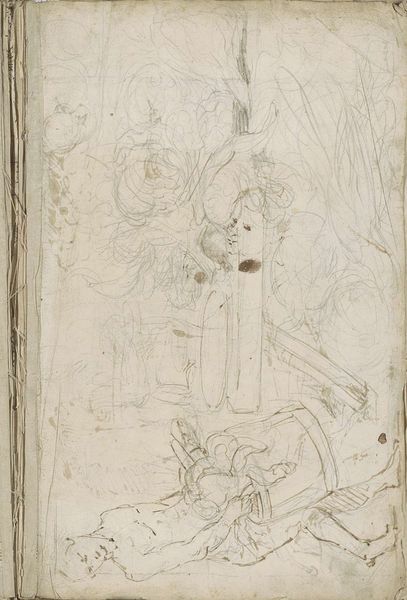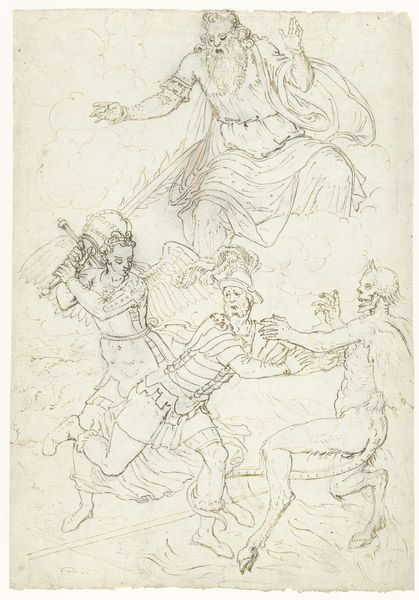
Fragment van een tekening voorstellende de heilige Hieronymus 1510 - 1564
0:00
0:00
domenicocampagnola
Rijksmuseum
drawing, ink, pen
#
portrait
#
drawing
#
toned paper
#
light pencil work
#
narrative-art
#
pen sketch
#
pencil sketch
#
figuration
#
11_renaissance
#
personal sketchbook
#
ink
#
ink drawing experimentation
#
pen-ink sketch
#
pen work
#
sketchbook drawing
#
pen
#
history-painting
#
italian-renaissance
#
sketchbook art
Dimensions: height 131 mm, width 94 mm
Copyright: Rijks Museum: Open Domain
Curator: Welcome. We’re standing before a drawing, simply titled "Fragment van een tekening voorstellende de heilige Hieronymus" or "Fragment of a Drawing Depicting Saint Jerome," attributed to Domenico Campagnola, dating back to between 1510 and 1564. Editor: My initial impression is rawness; I see process. The lightness of the ink sketch gives it an immediacy, almost like eavesdropping on the artist’s thoughts. It’s a compelling, unpolished look. Curator: Indeed. Campagnola, known for his landscape paintings and drawings in the Venetian Renaissance style, created this work likely as a preparatory study. The incomplete nature allows a glimpse into his artistic process, demonstrating how artists developed their compositions and figural representations. The Church's heavy patronage during this period influenced subject choices too. Editor: It's fascinating how much can be conveyed with so little. The material itself–pen and ink on toned paper – speaks volumes. Paper wasn’t always cheap; its very use here denotes a level of commitment and suggests a valued working sketch rather than just casual doodling. This was work that might later translate into a substantial commission. Curator: Exactly. St. Jerome, a popular subject during the Renaissance due to his translation of the Bible into Latin, embodies intellectual pursuit and religious devotion. Representing him would be appealing to a learned clientele invested in classical and religious knowledge. The visual imagery played a role in solidifying the Church's and patrons’ intellectual stature. Editor: I'm particularly drawn to how the lines vary in thickness. The pressure of the artist's hand on the pen really animates the image. Look at the detail on what is visible of Jerome; that deliberate act makes all the difference, humanizing the Saint through sheer mark-making. Curator: That level of expressiveness through basic materials also speaks to shifting perceptions and roles within the workshop culture during the Renaissance. The artist increasingly transitioned into more of a singular creative force, marking a pivotal point for what constitutes "Art." Editor: Agreed. The material scarcity emphasizes intention. Campagnola makes clear artistic decisions. This drawing is not a dry replication but a study filled with purpose, made manifest through readily available tools. It almost doesn’t need a large scale canvas to convey this idea! Curator: Considering its function within Renaissance workshop practices and broader cultural trends highlights the drawing’s important position for re-evaluation within the established artistic canon. Editor: Absolutely; examining the drawing this way allows us to connect the handmade, almost industrial process, directly to broader historical themes, enriching our understanding of artistic endeavor itself.
Comments
No comments
Be the first to comment and join the conversation on the ultimate creative platform.
